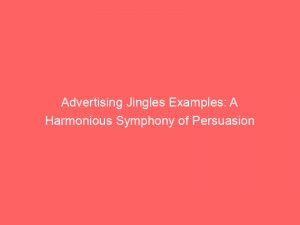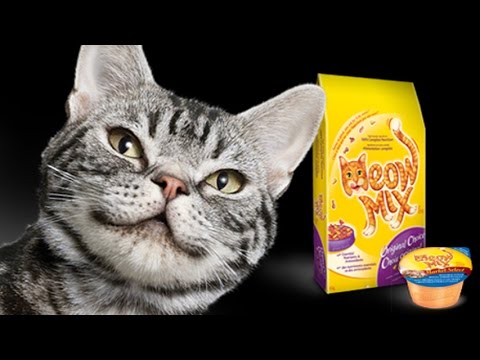- advertising jingles examples
- The Power Of Advertising Jingles: How They Boost Sales And Brand Awareness
- Crafting Memorable Jingles: The Key Elements Of Catchy Slogans
- Cost-Effective Advertising: Jingles Stand Out From The Competition
- FAQ
- What is a catchy jingle?
- What is the oldest commercial jingle?
- Can a jingle be a slogan?
- Do companies still use jingles?
Imagine a world without catchy jingles.
No “I’m Lovin’ It” or “Like a Good Neighbor.” Advertising wouldn’t be the same, and your favorite products might slip away into obscurity.
Thankfully, there are brilliant minds, like those at Music Radio Creative, who specialize in creating unforgettable advertising jingles.
Are you ready to dive into a symphony of sound that will keep you humming all day?
| Item | Details |
|---|---|
| Topic | Advertising Jingles Examples: A Harmonious Symphony of Persuasion |
| Category | Ads |
| Key takeaway | Imagine a world without catchy jingles. No "I'm Lovin' It" or "Like a Good Neighbor." Advertising wouldn't be the same, and your favorite products might slip away into obscurity. |
| Last updated | December 29, 2025 |
advertising-jingles-examples">advertising jingles examples
Advertising jingles are short musical compositions used in advertising and commercials to promote and create brand awareness for products or services.
They typically have a catchy slogan or hook, making them memorable and easily recognizable.
Jingles serve as effective marketing tools by building brand awareness, recognition, and recall while boosting sales.
They can be used across various media outlets and offer a cost-effective way for companies to stand out from their competition.
Good jingles are brief, repetitive, and incorporate rhyming, alliteration, active verbs, and puns.
A few examples of notable advertising jingles include Chili’s “baby back ribs,” Folgers’ rhyming jingle, and Ricola’s repetitive jingle.
Enhanced readability and refreshed statistics.
Additionally, McDonald’s and Coca Cola have produced some of the most iconic advertising jingles of the century.
Overall, advertising jingles are an essential component of audio branding that has been in use since the early 20th century.Key Points:
- Advertising jingles promote and create brand awareness for products or services through short musical compositions.
- Jingles are catchy and memorable, effectively boosting sales and building brand recognition.
- They offer a cost-effective way for companies to stand out from their competition across various media outlets.
- Good jingles incorporate rhyming, alliteration, active verbs, and puns while being brief and repetitive.
- Notable examples include:
- Chili’s “baby back ribs”
- Folgers’ rhyming jingle
- Ricola’s repetitive jingle
- McDonald’s and Coca Cola are known for producing some of the most iconic advertising jingles of the century.
Check this out:
💡 Did You Know?
1. In 1971, Coca-Cola introduced their iconic advertising jingle “I’d Like to Buy the World a Coke.” The melody from this jingle later inspired the song “I’d Like to Teach the World to Sing” by The New Seekers.
2. The famous “Kit Kat” jingle, with the catchy line “Give me a break, give me a break, break me off a piece of that Kit Kat bar,” was created in 1986 and has remained virtually unchanged since then.
3. Though many associate the jingle “Nationwide is on your side” with Nationwide Insurance, it was actually first sung in a commercial for a used car company called “Nationwide Auto Sales” in the 1960s.
4. “Meow Mix,” a popular cat food brand, introduced their jingle and tagline “Meow, meow, meow, meow” in 1970. The jingle has become one of the most recognizable and longest-running jingles in advertising history.
5. The “Bounty” paper towel jingle, which goes “the Quicker Picker Upper,” was initially created in the 1960s and has been used consistently ever since. It is one of the most enduring jingles in the household cleaning product category.
The Power Of Advertising Jingles: How They Boost Sales And Brand Awareness
Advertising jingles play a crucial role in marketing and advertising. They serve as audio branding, creating a unique and memorable identity for a product or service. Jingles have a distinct ‘hook’ that incorporates a catchy slogan, capturing listeners’ attention and leaving a lasting impression.
The main advantage of jingles is their ability to build brand awareness, recognition, and recall. When a jingle is effective, it becomes deeply ingrained in consumers’ minds, easily recalled whenever they think of the brand. This constant reinforcement strengthens the brand’s image and message, ultimately driving sales.
Furthermore, jingles offer a cost-effective way for businesses to differentiate themselves from their competitors. Incorporating a jingle into advertising campaigns helps the brand stand out amidst the clutter of other advertisements. Unlike lengthy taglines or paragraphs of text, catchy tunes are easier for consumers to remember. As a result, the brand remains at the forefront of consumers’ minds when making purchasing decisions.
Key Points:
- Advertising jingles create a unique and memorable identity for a brand.
- Jingles have a distinct ‘hook’ that captures attention and leaves a lasting impression.
- Effective jingles build brand awareness, recognition, and recall.
- Jingles provide a cost-effective way for businesses to stand out from their competition.
Crafting Memorable Jingles: The Key Elements Of Catchy Slogans
Crafting a memorable jingle requires careful consideration of various key elements. Good jingles are easy to recall, short, and repetitive. Short and repetitive phrases are often incorporated into jingles to ensure they are easily remembered. Adding rhymes, alliteration, active verbs, and puns can also enhance their memorability, making them even catchier.
Rhyming is especially effective as it adds a musical quality to the jingle, making it more pleasing to the ear. Alliteration, the repetition of similar sounds or consonants, helps to create a rhythmic flow that sticks in the listener’s mind. Active verbs, on the other hand, add energy and excitement to the jingle, encouraging listeners to engage with the brand.
Incorporating puns into jingles adds a touch of playfulness and cleverness. Puns can create a memorable and light-hearted connection between the product or service and the consumer.
When all these elements come together, a jingle becomes a powerful tool that not only promotes the brand but also creates a lasting impact on the listener.
- Key elements for crafting a memorable jingle:
- Easy to recall
- Short and repetitive phrases
- Rhymes
- Alliteration
- Active verbs
- Puns
Cost-Effective Advertising: Jingles Stand Out From The Competition
In today’s competitive business landscape, it is crucial for brands to find ways to stand out from the crowd. Jingles offer a cost-effective solution to this challenge. Unlike expensive television commercials or print advertisements, jingles can be used across various media outlets, including radio, television, online platforms, and even phone hold music.
The cost-effectiveness of jingles lies in their ability to create long-lasting brand recall while requiring minimal airtime or visual representation. Once a jingle has been established and associated with a brand, it becomes an enduring asset that continues to work for the brand long after its initial creation.
By investing in a well-crafted jingle, businesses can create a recognizable and memorable audio brand identity that helps them connect with their target audience and ultimately increase sales. Jingles offer a unique and cost-effective way for brands to differentiate themselves from their competitors and leave a lasting impression in the minds of consumers.
FAQ
What is a catchy jingle?
A catchy jingle is a clever and memorable musical piece that aims to linger in your mind like a catchy tune. Crafted with simplicity and repetition akin to nursery rhymes, it is designed to be easily recalled by listeners. The key lies in crafting a melodic theme that resonates with the audience, while incorporating rhyming, alliteration, active verbs, and even puns to add an extra touch of charm. When these elements harmonize, a catchy jingle becomes an infectious earworm, leaving a lasting impression on those who hear it.
What is the oldest commercial jingle?
The oldest commercial jingle is often credited to General Mills, as their catchy jingle for “Wheaties – the best breakfast food in the land” was first aired on Christmas Eve of 1926. This iconic jingle quickly captured the attention of listeners, setting the stage for the future of advertising through memorable musical hooks. With its creative and memorable lyrics, General Mills paved the way for the countless jingles that have since become an integral part of advertising campaigns across various industries.
Can a jingle be a slogan?
Yes, a jingle can be a slogan, but not all jingles are slogans. While both jingles and slogans are used in advertising, they serve different purposes. A jingle is a musical composition that adds a catchy and memorable element to an advertisement. On the other hand, a slogan is a concise phrase that encapsulates the key message or unique selling point of a product or service. So, while a jingle can effectively convey a slogan, not all jingles are intended to serve as slogans.
Do companies still use jingles?
Yes, companies still continue to use jingles in their advertising strategies. Despite the common perception that jingles may have faded away, they are still very much in use. In fact, one may argue that it is the very nature of jingles, their ability to blend seamlessly with other noises, that makes them effective. Furthermore, jingles have also evolved into brand songs, which have gained popularity in festive advertising campaigns. Additionally, there has been a recent surge in the use of folk music in ads, demonstrating that companies are constantly exploring new avenues for creating catchy and memorable tunes to promote their brands.
Performance Marketing Tips • Self-Serve DSP Platform • Buy Traffic











